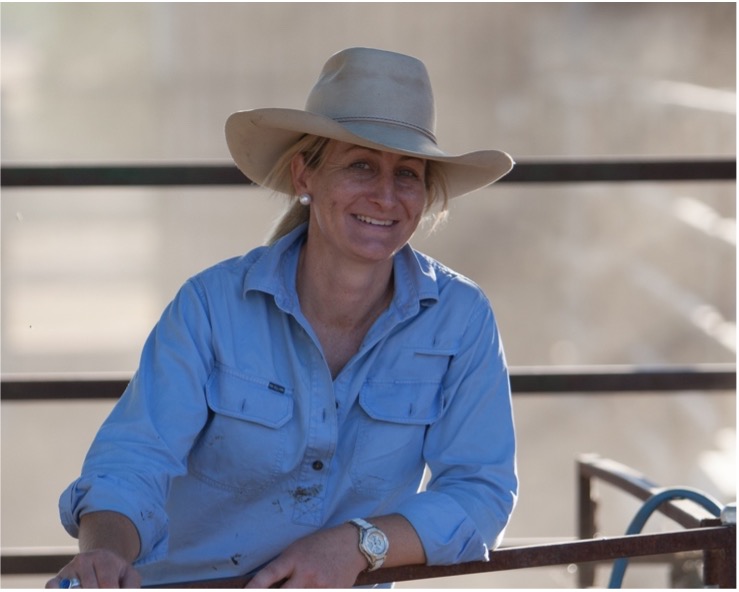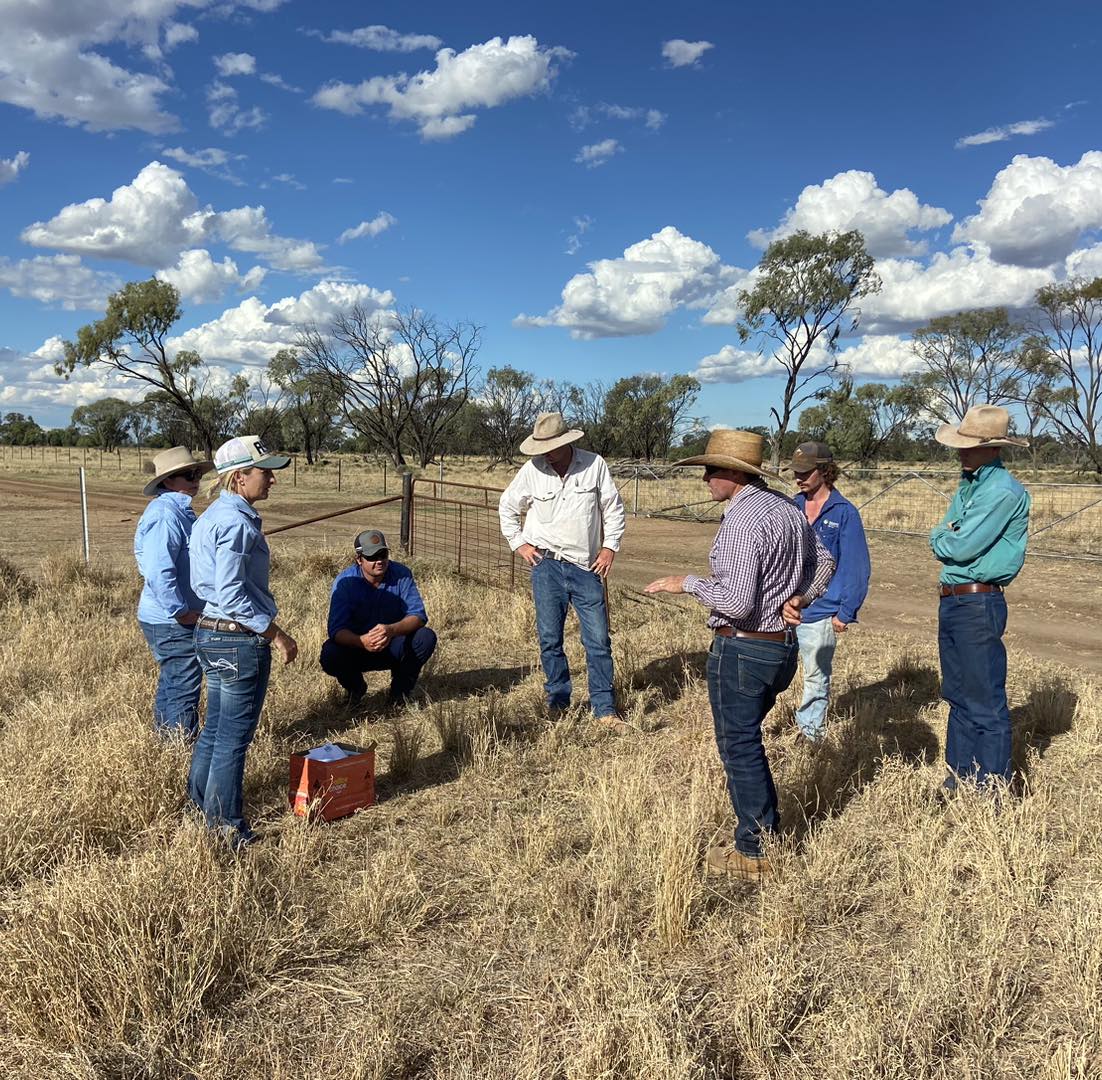Producer Profile - Dr Jillian Kelly
AHN Consulting blends veterinary science, ruminant nutrition, and farm management to deliver services to livestock producers and the broader agriculture sector. The business was founded by Dr Jillian Kelly in 2022. Prior to commencing her consultancy, Dr Jillian Kelly worked as the District Veterinarian with the Central West LLS.
The AHN Consultancy provide a range of services including; Disease Investigations; Ovine Brucellosis Testing & Accreditation; Farm Calendar Planning; Feed Budgeting; Worm & Fly Management; Vaccination Plans; Drought Preparedness; Drought Feeding & Feedlot Advice; Worm Egg Counts; Over-the-phone Consultations; Newsletters; Veterinary Medications and key speaker at webinars and industry workshops and events.
.
Snapshot
Name & Town: Dr Jillian Kelly – Owner & Founder Animal Health & Nutrition Consulting
Enterprise: Livestock Consultant & Veterinarian
Livestock Number: Sheep – Cattle – Goats
Area serviced: North West NSW and SW Qld

Dr Kelly uses the AFM to assist in developing key messages for clients as part of her nutrition and drought preparation strategies. She uses the AFM both to manage her own small beef enterprise and as a case study for her client base. In recent weeks she used the AFM to provide this advice to her producers as part of her regular client newsletters.
“To Move, Sell or Supplement?
In any moment of decision, the best thing you can do is the right thing, the next best thing is the wrong thing, and the worst thing you can do is nothing. Theodore Roosevelt
I sold a mob of trade heifers a couple of weeks ago for $1400 each and if I squint my eyes enough at the figures I might* have broken even. (*also might not have)
Did I do the right thing? Yes, according to my gut instinct. No, according to an old bloke I ran into down the street. I guess time will tell! I thought I’d write about my own experience today, rather than use anyone else as a case study, although many of my clients are facing similar sorts of decisions. Everyone approaches these sorts of decisions differently, however hopefully the considerations and the thought processes behind the decisions take into account similar factors.
Feed quantity
In January, I could see the pasture was thinning. But by how much? I threw the pasture square out and did some quantity estimations. 2500kgDM/ha I thought.
I then did some calculations – if I want to retain 1000kgDM/ha on the paddock, this gives me 1500kgDM/ha to eat. Wastage is around 50%, pasture decay over the hot months is 25%, so that leaves me 375kgDM/ha to eat. The paddock is 40ha, so that’s a total of 15,000kgDM. The 30 kangaroos on the property are 0.7DSE each, they’ll eat 0.5kg each day which is a total of 15kg total each day. If each heifer eats 12kg per day, and there are 14 heifers, that’s 170kg per day. All up, I’ve got around 81 days’ worth of grass left.
Some of you will be more familiar with calculating grazing days, using livestock units or a grazing chart. It doesn’t matter how you do it, as long as you’re thinking about how long your paddock will last and what you’re going to do when you need to move the stock.
The Weather
I looked at the three-monthly forecast and while I know they are inaccurate; I couldn’t see much hope other than erratic and unpredictable storm rain forecast over the next 90 days. I’ll talk to my agent, I might hold onto them just a little bit longer, I thought. You never know, it might rain.
Technology
I then got on Cibo Labs and looked up the satellite info. This confirmed how sparse the pasture was becoming (especially in some parts of the paddock) over time. I had around 3000kgDM/ha in January, which had dropped to around 2500kgDM/ha by February, with some very bare patches in the paddock (less than 1000kgDM/ha)!
This could be just the normal late summer feed gap, it could be the start of some drier weather. Either way, play the hand that’s dealt!
Cibo Labs have a free level of service available to all producers as part of their myMLA login. Go to www.cibolabs.com.au to have a look at your farm Total Standing Dry Matter and keep an eye on it! Look at the past graphs, and if you’re feeling really brave, scroll back and look at the (lack of) ground cover throughout the drought and then to cheer yourselves up, the dry standing feed after it broke.
Selective Grazing
Riding through the paddock, I could see which plants the heifers were preferencing. I could see that even though I wanted my cattle to uniformly chew the grass down to 1000kgDM/ha, I couldn’t create density high enough to get uniform grazing. This meant that they were going to continue to flog the short, sweet pasture.
I didn’t feel inclined to deal with electric fencing and moving water regularly to create grazing pressure (girl’s gotta work!) so this was not a realistic option for me.
I am still trying to increase my grass butts per square metre following the drought, and I knew if I held onto the stock they were going to chew the fresher, newer grass butts into oblivion (hello galvanised burr) and the old dry buffel would still be standing there.
The bare spaces created by this grazing behaviour were also going to make medic induced bloat more likely if we did get winter rain. Maybe I was better to lose money on animals now, than lose money on bloated cattle in July?
Feed quality
I knew that the summer grass plants in the paddock had gone to seed and senesced, as evidenced by the umbrella grass blown up around the back door on a daily basis. I estimated that the energy would be about 5.5MJ ME/kgDM, the crude protein 5% or below and the NDF somewhere north of 70%. Below maintenance for 400kg heifers trying to gain condition.
Each afternoon the heifers were looking unimpressed at the Calsomag tub, wondering if there was anything else on offer. Their poos were like pyramids.
They still looked fresh, shiny, fat. However, I recognise that there is 80kg in a condition score, so by the time they dropped enough fat that I noticed, they’d be significantly lighter.
I might buy some dry lick, I thought. I’d done the sums on this – it would cost me 21c per head per day and would increase dry feed utilisation and consumption by 10%. I also could have bought some pellets or cotton seed and got really active in the supplementary feeding game, but again my day-job and other life priorities make me unwilling to feed stock daily!
The Decision…
I’d considered pasture quantity, quality, priorities of the paddock as well as the risks of eating the dry matter that was at best going to hold condition on stock in order to buy time. I came to the conclusion that this was going to compromise the health of the paddock over the longer term which wasn’t worth the extra $ and the gamble over the next few months. I’m also incredibly privileged that I can cash out of livestock and go to work every day when I need to!
If I put ten producers in this scenario, I’d probably get ten different opinions and many different approaches. I’m not telling you to sell your stock! I’m just highlighting some of the livestock, rumen function and pasture related considerations that you might think of when you’re thinking about moving, selling or supplementing sheep or cattle.”
Summary

-
- The AFM provides a valuable tool for consultants and advisors to highlight key messages around practices such as feed budgeting; decision widows and planning for future actions such as destocking or feeding
- The AFM can be used to shape advice as part of extension messages as well as support individual producers seeking advice
- Objective data, which is consistent and accurate can significantly reshape and refine decisions to achieve production outcomes with greater effectiveness.
